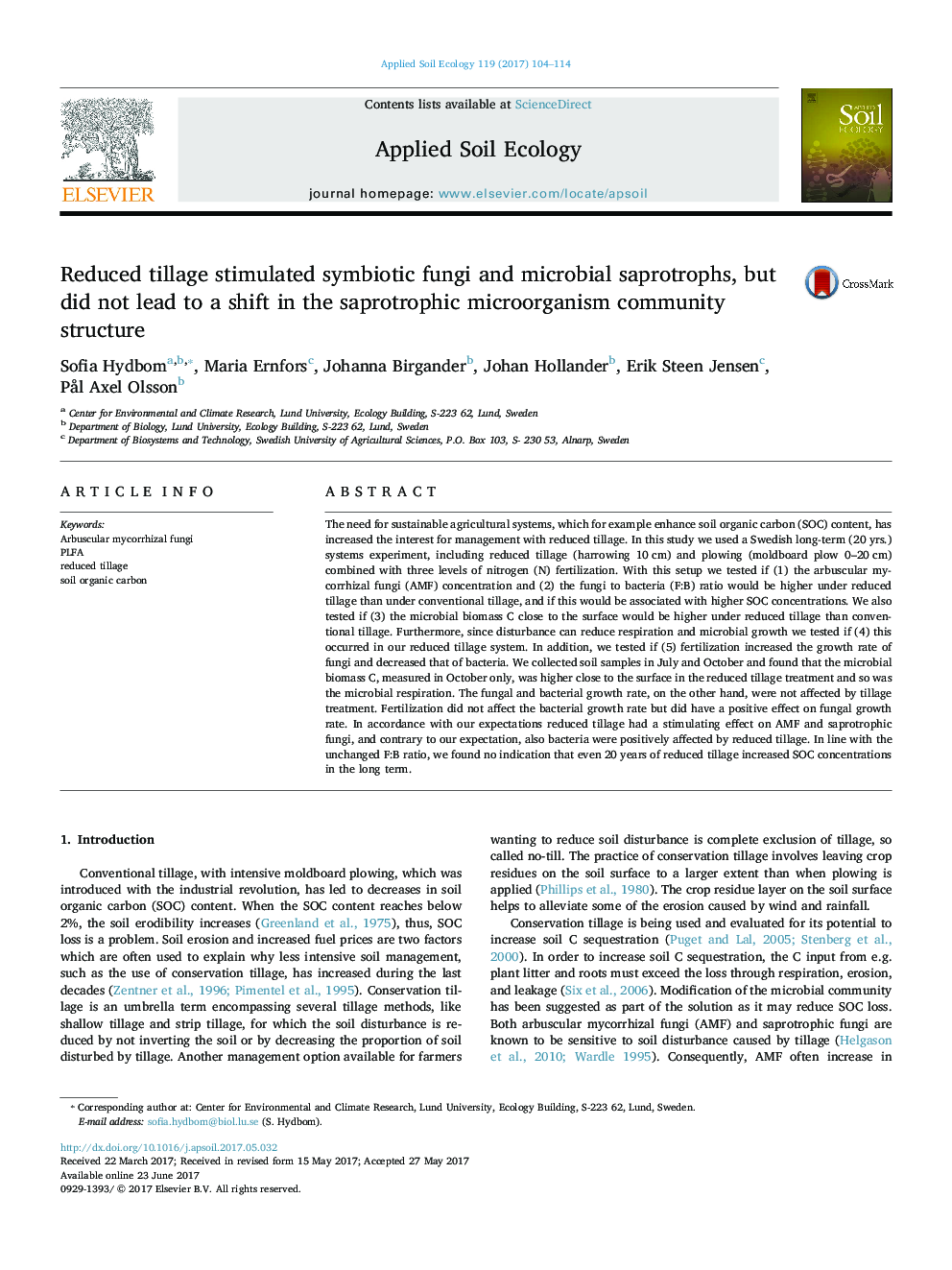| کد مقاله | کد نشریه | سال انتشار | مقاله انگلیسی | نسخه تمام متن |
|---|---|---|---|---|
| 5742619 | 1617765 | 2017 | 11 صفحه PDF | دانلود رایگان |
- Reduced soil tillage stimulated arbuscular mycorrhizal fungi.
- Reduced tillage did not lead to a change in the fungi to bacteria ratio.
- We found no evidence for long-term SOC concentration increase with reduced tillage.
The need for sustainable agricultural systems, which for example enhance soil organic carbon (SOC) content, has increased the interest for management with reduced tillage. In this study we used a Swedish long-term (20 yrs.) systems experiment, including reduced tillage (harrowing 10Â cm) and plowing (moldboard plow 0-20Â cm) combined with three levels of nitrogen (N) fertilization. With this setup we tested if (1) the arbuscular mycorrhizal fungi (AMF) concentration and (2) the fungi to bacteria (F:B) ratio would be higher under reduced tillage than under conventional tillage, and if this would be associated with higher SOC concentrations. We also tested if (3) the microbial biomass C close to the surface would be higher under reduced tillage than conventional tillage. Furthermore, since disturbance can reduce respiration and microbial growth we tested if (4) this occurred in our reduced tillage system. In addition, we tested if (5) fertilization increased the growth rate of fungi and decreased that of bacteria. We collected soil samples in July and October and found that the microbial biomass C, measured in October only, was higher close to the surface in the reduced tillage treatment and so was the microbial respiration. The fungal and bacterial growth rate, on the other hand, were not affected by tillage treatment. Fertilization did not affect the bacterial growth rate but did have a positive effect on fungal growth rate. In accordance with our expectations reduced tillage had a stimulating effect on AMF and saprotrophic fungi, and contrary to our expectation, also bacteria were positively affected by reduced tillage. In line with the unchanged F:B ratio, we found no indication that even 20 years of reduced tillage increased SOC concentrations in the long term.
Journal: Applied Soil Ecology - Volume 119, October 2017, Pages 104-114
